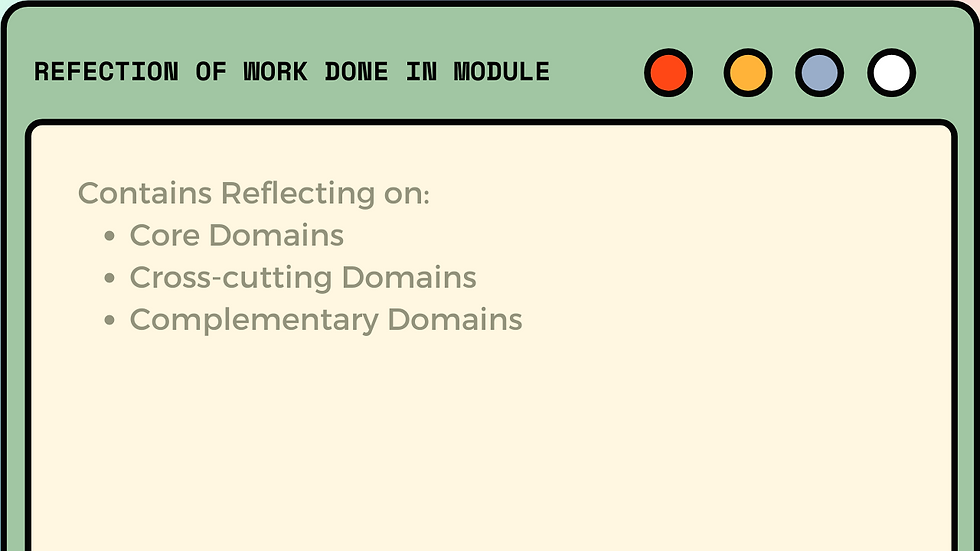Week 6 Reflection
- 2428616
- Sep 15, 2022
- 3 min read
Updated: Nov 2, 2022
In week six, we started with Module 3, which focuses on human resources as a building block of a health system. Human resources consist of the human workforce and human resources management. “A well-preforming health workforce works in ways that are responsive, fair, and efficient to achieve the best health outcomes possible, given available resources and circumstances.” The health workforce consists of health service providers (for example doctors and nurses) and health management and support workers (such as accountants who work in hospitals and janitors). Human Resource management is a function within an organisation with aim of helping an organisation reach its strategic objectives.
In South Africa, there is a shortage in the health workforce. The reasons for the shortage are, a shortage in the number of health services, health management and support workers that are graduating compared to the demands, low retention of health care professionals (doctors leaving the country and the public sector losing health care professionals to the private sector) and there are not enough posts for health care professionals due to financial reasons. There are four dimensions in understanding workforce performance, availability, competence, responsiveness, and productivity. Availability has to do with the distribution and attendance of existing workers in areas where they are needed. Competence encompasses the combination of technical knowledge, skills and attitudes, and work behaviours. Responsiveness means that people are treated decently, regardless of social, economic, or health status, who they are or whether or not their health improves. Productivity means that producing the maximum effective health services and health outcomes possible given the existing staff; reducing waste of staff time or skills and other complementary resources.
This is how each dimension applies in South Africa. Availability, Challenges: There is a lack of health care workers - especially for some disciplines. Health care workers are not always available to deliver services where it is needed. Solutions: Train more mid-level workers, such as Clinical Associates. Improve team-based care with the use of Community Health Workers Within a team-based care approach, encourage task-sharing. Give healthcare professionals positive exposure to rural health training. Competency, Challenges: Health care workers are not always suitably qualified to serve the needs of a population due to a skills gap mismatch of competencies with patient and population needs. Solutions: Train people to address QBD (quadruple burden of disease). Re-orient medical education, research, and service priorities to respond to current and future health needs and challenges in society. Train healthcare professionals in primary healthcare settings. Improve supervision of healthcare workers. Responsiveness: Challenges: Low morale and insufficient supervision. Unsafe conditions in the workplace. High attrition. Solutions: Improve working environments, e.g., through the Ideal Clinic initiative. Improve compensation, e.g., Rural Health Allowance or Occupation Specific Dispensation. Productivity, Challenges: Lack of efficiency, Supervision, Management. Solutions: Improve quality assurance, e.g. through the Office of Health Standards Compliance. Improve guidelines and protocols, by introducing a performance management framework for public sector employees.
From this module, I have learned the importance of human resource management, especially after seeing how the challenges in South Africa are solved by HR. Health systems need there to be healthcare professionals and people outside of health care to be able to be successful so it is interesting to release the importance of HR. HR organises Health Systems to reach its strategic objectives.
References:
Health Professionals Council of South Africa, 2018. Professional Boards. Available at: https://www.hpcsa.co.za/Professionals/ProBoardsLinks to an external site. (Last accessed: 15 September 2022).
The Allied Professions Council of South Africa, 2018. AHPCSA. Available at: https://ahpcsa.co.za/Links to an external site. (Last accessed: 15 September 2022).
Mohr, J./WHO. 2006. Health Workers: A Global Profile. Available at: https://www.who.int/whr/2006/06_chap1_en.pdfLinks to an external site. (Last accessed: 15 September 2022).
Hart, J.T., 1971. The inverse care law. The Lancet, 297(7696), pp. 405-412.
Lumen Candela, N.D. The Functions and Goals of HR. (online) Available at: https://courses.lumenlearning.com/boundless-business/chapter/the-functions-and-goals-of-hr/#:~:text=In%20short%2C%20human%20resource%20activities,a%20wide%20variety%20of%20activitiesLinks to an external site. [Accessed 15 September 2022]
Lumen Candela, N.D. Human Resource Management. (online) Available at: https://courses.lumenlearning.com/wmopen-introductiontobusiness/chapter/human-resource-management/Links to an external site. [Accessed 15 September 2022]
Nina Burokas, 2020. Functions of Human Resources Management. (online) Available at: https://biz.libretexts.org/Courses/Lumen_Learning/Book%3A_Human_Resources_Management_(Lumen)/04%3A_Module_1%3A_The_Role_of_Human_Resources/04.5%3A_Functions_of_Human_Resources_ManagementLinks to an external site. [Accessed 15 September 2022]
Smith, A., Unv. ‘Chapter 4: Making the Most of Existing Health Workers’ in The World Health Report, 2006. Available: https://www.who.int/whr/2006/06_chap4_en.pdfLinks to an external site. (Last accessed: 15 September 2022).


Comments